 Today we have a review of a durable, water-resistant, infrared, all in one and battery powered outdoor surveillance recording system. It's called the Swann OutbackCam (SWVID-OBC5MP) and is reasonably priced at around the £74 on Amazon within the UK and for the USA price check our links at the bottom of the review. So we've been testing it out over the past two weeks. It's designed to keep a firm eye on locations the user sets it up within when they're not there. How good is it? Keep on reading.
Today we have a review of a durable, water-resistant, infrared, all in one and battery powered outdoor surveillance recording system. It's called the Swann OutbackCam (SWVID-OBC5MP) and is reasonably priced at around the £74 on Amazon within the UK and for the USA price check our links at the bottom of the review. So we've been testing it out over the past two weeks. It's designed to keep a firm eye on locations the user sets it up within when they're not there. How good is it? Keep on reading.
Rugged the OutbackCam definitely is. Constructed from a thick plastic that can easily withstand some serious drops and bumps from the outdoors. We left ours out in mild rain and heavy winds and the camera held up brilliantly. The exterior plastic body is black, a colour that is definitely discretely hidden from preying eyes within the night but during the day a little more creativity is needed when choosing a placement.
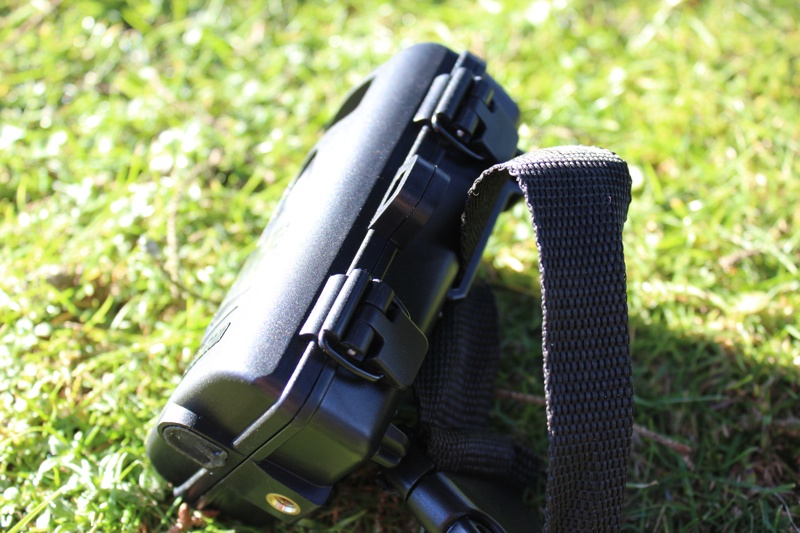 The front of the camera sits a motion sensor, below this is the lens and then below this is an IR sensor. The camera is very easy to open and close. Two clasp locks are situated on the right hand side. Of course some individuals will require greater security than this, so a padlock loop is inbuilt too. Moving around to the back of the unit we find a buckle strap that allows easy and quick adjustment of the tightness. Ideal for mounting the camera onto a tree, fence post, drain pipe and other similar shaped objects. Also supplied for mounting is a tripod screw located on the bottom.
The front of the camera sits a motion sensor, below this is the lens and then below this is an IR sensor. The camera is very easy to open and close. Two clasp locks are situated on the right hand side. Of course some individuals will require greater security than this, so a padlock loop is inbuilt too. Moving around to the back of the unit we find a buckle strap that allows easy and quick adjustment of the tightness. Ideal for mounting the camera onto a tree, fence post, drain pipe and other similar shaped objects. Also supplied for mounting is a tripod screw located on the bottom.
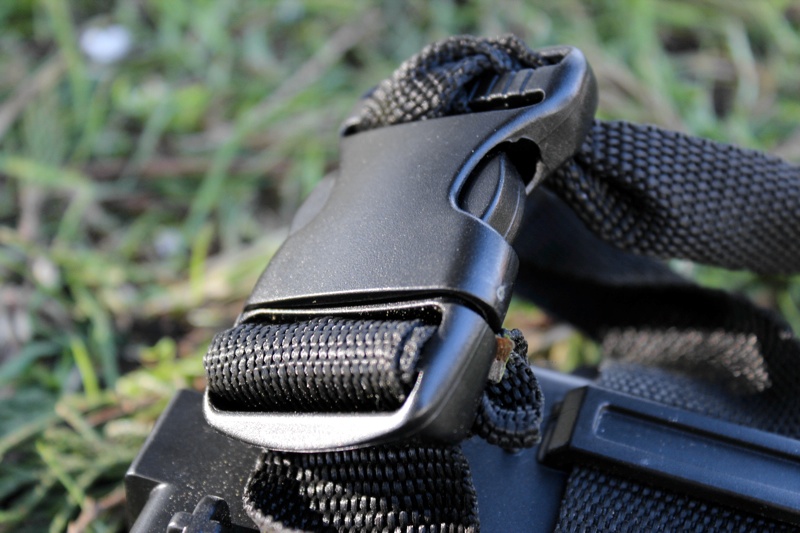 All digital setting up and function is hidden away inside the OutbackCam. This is where we can get into the nitty gritty of the device. Setting up time, date, capture quality, mode of capturing which include taking one or three still photos or video and whether you'd like to use Passive Infrared (PIR), essentially the sensor to trigger capturing or instead set a timer or configure a time lapse. Quite a lot of functionality is here which we were delighted to see but using the menu via the numerical non backlit (it's a pain in the dark) screen and three buttons will require a read of the manual, something not overly required nowadays and especially rare for us. The UI was very basic but it got the job done. The on and off switch is also placed on the inside, slightly annoying but we understand why from a security stand point.
All digital setting up and function is hidden away inside the OutbackCam. This is where we can get into the nitty gritty of the device. Setting up time, date, capture quality, mode of capturing which include taking one or three still photos or video and whether you'd like to use Passive Infrared (PIR), essentially the sensor to trigger capturing or instead set a timer or configure a time lapse. Quite a lot of functionality is here which we were delighted to see but using the menu via the numerical non backlit (it's a pain in the dark) screen and three buttons will require a read of the manual, something not overly required nowadays and especially rare for us. The UI was very basic but it got the job done. The on and off switch is also placed on the inside, slightly annoying but we understand why from a security stand point.
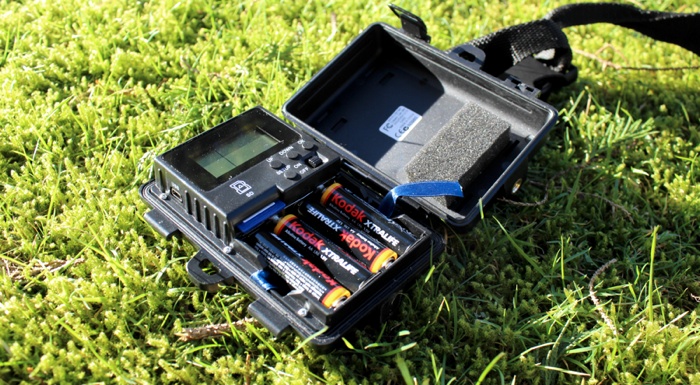 Moving onto the power source which is four AA batteries that sit in a shell inside and are firmly secured via a foam piece hugging them when the body is closed. We absolutely detested this choice of a power source, a battery pack along with a charger should have been included instead. The OutbackCam informed us that our batteries weren't sufficient every four days of popping in a set of four new ones. Definitely not user friendly and will make enemies with your wallet quickly too. Of course in the end the best option we found was to use four rechargeable AA batteries. The claim on the box is one months worth of usage from one set of four AA batteries. We find this very hard to believe but improved battery life probably could be achieved if we used image mode solely. We liked to use movie mode during the night, set to capture 20 seconds when the sensor was triggered because we found that mode interesting. So essentially we actually struck 48+ hours of usage over the duration of four days. Eventually we switched to using a mixture of image capturing and video capturing and we achieved the same unacceptable four day battery life.
Moving onto the power source which is four AA batteries that sit in a shell inside and are firmly secured via a foam piece hugging them when the body is closed. We absolutely detested this choice of a power source, a battery pack along with a charger should have been included instead. The OutbackCam informed us that our batteries weren't sufficient every four days of popping in a set of four new ones. Definitely not user friendly and will make enemies with your wallet quickly too. Of course in the end the best option we found was to use four rechargeable AA batteries. The claim on the box is one months worth of usage from one set of four AA batteries. We find this very hard to believe but improved battery life probably could be achieved if we used image mode solely. We liked to use movie mode during the night, set to capture 20 seconds when the sensor was triggered because we found that mode interesting. So essentially we actually struck 48+ hours of usage over the duration of four days. Eventually we switched to using a mixture of image capturing and video capturing and we achieved the same unacceptable four day battery life.
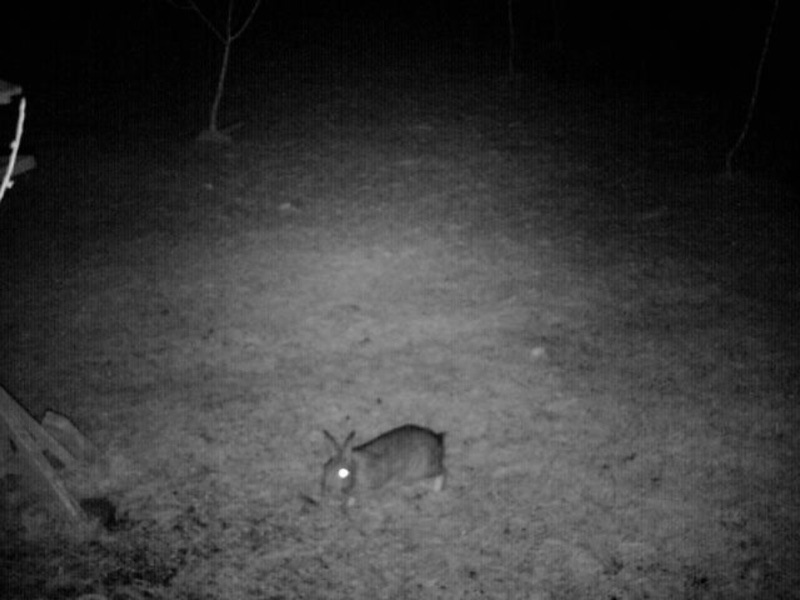 Now the results. Firstly the sensor seemed to be very accurate, instantly detecting us every time we walked past the camera. So it's a safe bet it'll accurately go off when an animal or other object with heat is detected. We primarily wanted to use and test the OutbackCam to capture wildlife at night. This is partly due to not much really happening in the day other than the appearance of pheasants and birds. Of course some may want to use this as a security system, possibly impractical with the battery performance. Night vision is brilliant, the sheer detail of 640x480 video playback within this mode is impressive. Video recordings have a consistent frame rate and wide field of few. Video is far more interesting than still photos to us. We can see where and how animals behave outdoors and more detail of what they look like. We caught many rabbits and a fox on video. We were hoping to see a little more wildlife but what we did capture was very insightful and fascinating to watch. Photo mode works well too but is so static and dull to view if used in conjunction with PIR mode, it's more suited to be married with time lapse mode. The photos can be taken in an up to resolution of 2560x1920 delivered from a five megapixel sensor, the results are impressive. The auto exposure and capture speed works a treat and the images produced are sharp and clear in both daylight and night.
Now the results. Firstly the sensor seemed to be very accurate, instantly detecting us every time we walked past the camera. So it's a safe bet it'll accurately go off when an animal or other object with heat is detected. We primarily wanted to use and test the OutbackCam to capture wildlife at night. This is partly due to not much really happening in the day other than the appearance of pheasants and birds. Of course some may want to use this as a security system, possibly impractical with the battery performance. Night vision is brilliant, the sheer detail of 640x480 video playback within this mode is impressive. Video recordings have a consistent frame rate and wide field of few. Video is far more interesting than still photos to us. We can see where and how animals behave outdoors and more detail of what they look like. We caught many rabbits and a fox on video. We were hoping to see a little more wildlife but what we did capture was very insightful and fascinating to watch. Photo mode works well too but is so static and dull to view if used in conjunction with PIR mode, it's more suited to be married with time lapse mode. The photos can be taken in an up to resolution of 2560x1920 delivered from a five megapixel sensor, the results are impressive. The auto exposure and capture speed works a treat and the images produced are sharp and clear in both daylight and night.
How do you actually view content from the the OutbackCam you ask? Well an SD card is inserted within a spring loaded SD card slot inside the camera. A very good sized 4GB SD card is supplied within the box, but a card of up to 32GB Is supported. A USB 2.0 cable can be plugged into the inside of the camera and then into a computer to extract data. The files used are very standard .JEPG and .Mov, that should be easily viewable on any computer. But we prefer to just pop out the SD card and insert it directly into an iPad via the Apple Camera Connection Kit. This method conveniently allows us to quickly view and manage content taken.
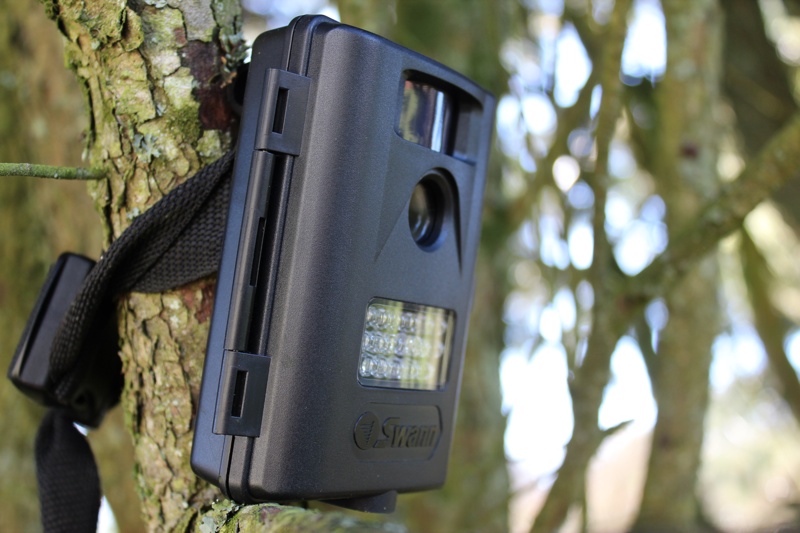 To sum up and look at the Swann OutbackCam as solely an affordable all-in-one video and photo capturing device used outdoors, it's a great bit of kit. The build is rugged and the performance of photo and video capturing is great in the daylight, but very noteworthy at night. However the severely poor battery life experienced from video capturing, simply isn't acceptable. But to make it worse four AA batteries are required which aren't practical to constantly replace either. For this reason it makes the Swann OutbackCam a flawed product, severely damaging it's appeal.
To sum up and look at the Swann OutbackCam as solely an affordable all-in-one video and photo capturing device used outdoors, it's a great bit of kit. The build is rugged and the performance of photo and video capturing is great in the daylight, but very noteworthy at night. However the severely poor battery life experienced from video capturing, simply isn't acceptable. But to make it worse four AA batteries are required which aren't practical to constantly replace either. For this reason it makes the Swann OutbackCam a flawed product, severely damaging it's appeal.


